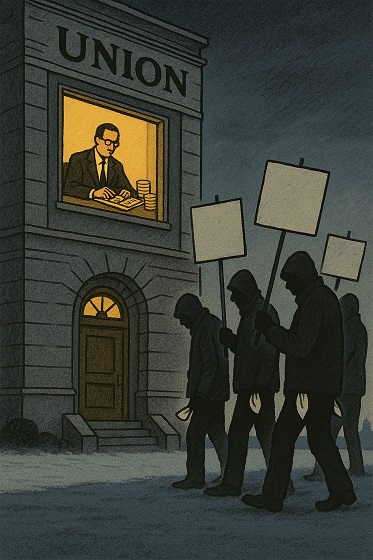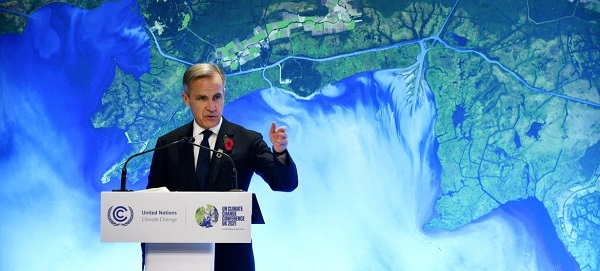Uncategorized
More Boeings grounded amid global probe into Ethiopia crash

HEJERE, Ethiopia — A growing number of airlines grounded a new Boeing plane involved in the Ethiopian Airlines disaster as a global team of investigators began picking through the rural crash site on Tuesday.
Some airlines cited worried customers for grounding the Boeing 737 Max 8, as experts chased details on why the plane crashed shortly after takeoff Sunday, killing all 157 on board.
Ethiopian Airlines had issued no new updates on the crash as of late afternoon as families around the world waited for answers. Some insights into the disaster and its cause could take months, aviation experts said.
Oman and South Korean airline Eastar Jet were the latest to halt use of the Boeing 373 Max 8. Australia and Singapore suspended all flights into or out of their countries.
Boeing, however, has said it has no reason to pull the popular aircraft from the skies, and it does not intend to issue new recommendations about the aircraft to customers. Its technical team joined American, Israeli and other aviation experts in the investigation led by Ethiopian authorities.
The U.S. Federal Aviation Administration said it expects Boeing will soon complete improvements to an automated anti-stall system suspected of contributing to the deadly crash of another new Boeing 737 Max 8 in October, and update training requirements and related flight crew manuals.
Safety experts have cautioned against drawing too many comparisons too soon with that Lion Air crash of the same model that killed 189 people in Indonesia.
The Ethiopian Airlines plane crashed in clear weather six minutes after taking off for Nairobi.
One witness told The Associated Press that he saw smoke coming from the plane’s rear before it crashed in a rural field. “The plane rotated two times in the air, and it had some smoke coming from the back then, it hit the ground and exploded,” farmer Tamrat Abera said.
It should take five days before any victims’ remains are identified, Ethiopian Airlines spokesman Asrat Begashaw told the AP. The dead came from 35 countries and included dozens of humanitarian workers.
A pilot who saw the crash site minutes after the disaster told the AP the plane appeared to have “slid directly into the ground.”
Capt. Solomon Gizaw was among the first people dispatched to find the crash site, which was discovered by Ethiopia’s air force.
“There was nothing to see,” he said. “It looked like the earth had swallowed the aircraft. … We were surprised!” He said it explained why rescue officials quickly sent bulldozers to begin digging out large pieces of the plane.
Investigators on Monday found the jetliner’s two flight recorders at the crash site. An airline official, however, told the AP one recorder was partially damaged.
“The engine is here, the wreckage, the humans, the flesh and remains, still we are collecting,” one investigator at the site, Amdey Fanta, said Tuesday.
Ethiopian Airlines, widely seen as Africa’s best-managed airline, grounded its remaining four 737 Max 8s until further notice as “an extra safety precaution.” The carrier had been using five of the planes and was awaiting delivery of 25 more.
Airlines in China and Indonesia, Aeromexico, Brazil’s Gol Airlines, India’s Jet Airways and others also have temporarily grounded their 737 Max 8s.
As the global team searched for answers, a woman stood near the crash site, wailing.
Kebebew Legess said she was the mother of a young Ethiopian Airlines crew member among the dead.
“She would have been 25 years old but God would not allow her,” she wept. “My daughter, my little one.”
___
Meseret reported from Addis Ababa.
___
Follow Africa news at https://twitter.com/AP_Africa
Elias Meseret And Yidnek Kirubel, The Associated Press
Uncategorized
Cost of bureaucracy balloons 80 per cent in 10 years: Public Accounts

The cost of the bureaucracy increased by $6 billion last year, according to newly released numbers in Public Accounts disclosures. The Canadian Taxpayers Federation is calling on Prime Minister Mark Carney to immediately shrink the bureaucracy.
“The Public Accounts show the cost of the federal bureaucracy is out of control,” said Franco Terrazzano, CTF Federal Director. “Tinkering around the edges won’t cut it, Carney needs to take urgent action to shrink the bloated federal bureaucracy.”
The federal bureaucracy cost taxpayers $71.4 billion in 2024-25, according to the Public Accounts. The cost of the federal bureaucracy increased by $6 billion, or more than nine per cent, over the last year.
The federal bureaucracy cost taxpayers $39.6 billion in 2015-16, according to the Public Accounts. That means the cost of the federal bureaucracy increased 80 per cent over the last 10 years. The government added 99,000 extra bureaucrats between 2015-16 and 2024-25.
Half of Canadians say federal services have gotten worse since 2016, despite the massive increase in the federal bureaucracy, according to a Leger poll.
Not only has the size of the bureaucracy increased, the cost of consultants, contractors and outsourcing has increased as well. The government spent $23.1 billion on “professional and special services” last year, according to the Public Accounts. That’s an 11 per cent increase over the previous year. The government’s spending on professional and special services more than doubled since 2015-16.
“Taxpayers should not be paying way more for in-house government bureaucrats and way more for outside help,” Terrazzano said. “Mere promises to find minor savings in the federal bureaucracy won’t fix Canada’s finances.
“Taxpayers need Carney to take urgent action and significantly cut the number of bureaucrats now.”
Table: Cost of bureaucracy and professional and special services, Public Accounts
| Year | Bureaucracy | Professional and special services |
|
$71,369,677,000 |
$23,145,218,000 |
|
|
$65,326,643,000 |
$20,771,477,000 |
|
|
$56,467,851,000 |
$18,591,373,000 |
|
|
$60,676,243,000 |
$17,511,078,000 |
|
|
$52,984,272,000 |
$14,720,455,000 |
|
|
$46,349,166,000 |
$13,334,341,000 |
|
|
$46,131,628,000 |
$12,940,395,000 |
|
|
$45,262,821,000 |
$12,950,619,000 |
|
|
$38,909,594,000 |
$11,910,257,000 |
|
|
$39,616,656,000 |
$11,082,974,000 |
Uncategorized
Trump Admin Establishing Council To Make Buildings Beautiful Again


From the Daily Caller News Foundation
By Jason Hopkins
The Trump administration is creating a first-of-its-kind task force aimed at ushering in a new “Golden Age” of beautiful infrastructure across the U.S.
The Department of Transportation (DOT) will announce the establishment of the Beautifying Transportation Infrastructure Council (BTIC) on Thursday, the Daily Caller News Foundation exclusively learned. The BTIC seeks to advise Transportation Secretary Sean Duffy on design and policy ideas for key infrastructure projects, including highways, bridges and transit hubs.
“What happened to our country’s proud tradition of building great, big, beautiful things?” Duffy said in a statement shared with the DCNF. “It’s time the design for America’s latest infrastructure projects reflects our nation’s strength, pride, and promise.”
“We’re engaging the best and brightest minds in architectural design and engineering to make beautiful structures that move you and bring about a new Golden Age of Transportation,” Duffy continued.
Mini scoop – here is the DOT’s rollout of its Beautifying Transportation Infrastructure Council, which will be tasked with making our buildings beautiful again. pic.twitter.com/
9iV2xSxdJM — Jason Hopkins (@jasonhopkinsdc) October 23, 2025
The DOT is encouraging nominations of the country’s best architects, urban planners, artists and others to serve on the council, according to the department. While ensuring that efficiency and safety remain a top priority, the BTIC will provide guidance on projects that “enhance” public areas and develop aesthetic performance metrics.
The new council aligns with an executive order signed by President Donald Trump in August 2025 regarding infrastructure. The “Making Federal Architecture Beautiful Again” order calls for federal public buildings in the country to “respect regional architectural heritage” and aims to prevent federal construction projects from using modernist and brutalist architecture styles, instead returning to a classical style.
“The Founders, in line with great societies before them, attached great importance to Federal civic architecture,” Trump’s order stated. “They wanted America’s public buildings to inspire the American people and encourage civic virtue.”
“President George Washington and Secretary of State Thomas Jefferson consciously modeled the most important buildings in Washington, D.C., on the classical architecture of ancient Athens and Rome,” the order continued. “Because of their proven ability to meet these requirements, classical and traditional architecture are preferred modes of architectural design.”
The DOT invested millions in major infrastructure projects since Trump’s return to the White House. Duffy announced in August a $43 million transformation initiative of the New York Penn Station in New York City and in September unveiledmajor progress in the rehabilitation and modernization of Washington Union Station in Washington, D.C.
The BTIC will comprise up to 11 members who will serve two-year terms, with the chance to be reappointed, according to the DOT. The task force will meet biannually. The deadline for nominations will end Nov. 21.
-

 Daily Caller2 days ago
Daily Caller2 days agoDemocrats Explicitly Tell Spy Agencies, Military To Disobey Trump
-

 Business23 hours ago
Business23 hours agoCanada is failing dismally at our climate goals. We’re also ruining our economy.
-

 Daily Caller2 days ago
Daily Caller2 days agoALAN DERSHOWITZ: Can Trump Legally Send Troops Into Our Cities? The Answer Is ‘Wishy-Washy’
-

 Alberta2 days ago
Alberta2 days agoAlberta on right path to better health care
-

 Crime1 day ago
Crime1 day ago‘Modern-Day Escobar’: U.S. Says Former Canadian Olympian Ran Cocaine Pipeline with Cartel Protection and a Corrupt Toronto Lawyer
-

 Indigenous2 days ago
Indigenous2 days agoTop constitutional lawyer slams Indigenous land ruling as threat to Canadian property rights
-

 Alberta2 days ago
Alberta2 days agoAlberta Emergency Alert test – Wednesday at 1:55 PM
-

 Alberta24 hours ago
Alberta24 hours agoAlberta to protect three pro-family laws by invoking notwithstanding clause










